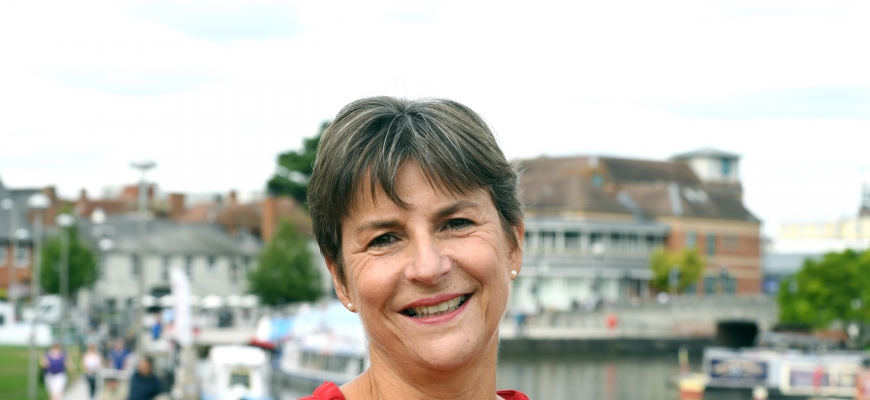
The Coventry and Warwickshire region has a fascinating history and one that is filled with hidden facts that some may find very interesting.
Do you know that Mick Jagger filmed a music video in Leamington or how the Belgrade Theatre in Coventry got its name or the famous connections that The Bell at Alderminster has?
Some people may do, but members of Shakespeare’s England have revealed some interesting nuggets of information that maybe not everyone knew.
There’s a whole host of thought-provoking material, which shows that there is plenty about the region still to discover.
The full list of facts includes:
- Coombe Abbey Hotel – In 1605, the infamous Guy Fawkes planned to kidnap Princess Elizabeth from Coombe Abbey and put her on her father’s throne following his assassination but thankfully, Fawkes’ plan was foiled.
- Belgrade Theatre – The city of Belgrade made a gift of timber to Coventry as a gesture of solidarity by a city who suffered a similar fate to Coventry during the Great War. The timber, which was in very short supply across Europe at the time, was used throughout the building and can be seen in the ceiling of the Main Stage auditorium and the restaurant at the Belgrade Theatre which was named in recognition of this generosity.
- British Motor Museum – William Morris, otherwise known as Lord Nuffield was the founder of Morris Motors Limited and also the founder of the Nuffield Foundation, the Nuffield Trust and Nuffield College, Oxford. He and Herbert Austin launched the first Morris Minor in 1928, which along with Morris’ reconstructed Cowley Office, can be seen at the British Motor Museum in Gaydon.
- The Shakespeare Birthplace Trust - one of Shakespeare’s relatives on his mother’s side, William Arden, was arrested for plotting against Queen Elizabeth I, imprisoned in the Tower of London and executed. Also, two of Shakespeare’s plays, Hamlet and Much Ado About Nothing, have been translated into the Star Trek language - Klingon. The Klingon Language Institute plans to translate more.
- The Royal Pump Rooms – Mick Jagger used the Pump Rooms in Leamington for his music video for Sweet Thing: https://www.youtube.com/watch?v=nXZUr3v6gNo
- The Bell, Alderminster – Current owner of the hotel, Emma Holman-West’s family have widespread connections with aristocracy and historical figures and the rooms are named and themed around this family history. Emma’s second cousin is retail entrepreneur Cath Kidston and her husband’s Great Grandfather Jesse Boot was the successful businessman and founder of high street store Boots.She is related to James West, Joint Secretary of the Exchequer in 1746 who lived in Covent Garden which one of the rooms is named after along with the All Stars, Bermondsey and Glanwye rooms.
- The Stag – The hotel used to be a court room and jail house in the 1600s due to its convenient location between Alcester and Stratford and is now used as a function room which is rumoured to be haunted.
- Royal Shakespeare Company – can host weddings in both the Swan and Royal Shakespeare Theatres in front of an ‘audience’ of family and friends. There is also the unique wedding location at the top of the Theatre Tower with period costumes to rent for weddings and parties.
- Dallas Burston Polo Club - the woodland which wraps around the site is more than 500 years old and it is rumoured that Shakespeare himself walked amongst the trees in the ancient woodland. The Stoneythorpe Manor, first built in 1549 using the green oak from the woodland. Our neighbouring town, Southam (which Shakespeare name-checks in Henry VI Part 3), and the surrounding woodlands were to play a key role 100 years later during the Civil War. The club is now working with the forestry commission to coppice and rejuvenate the woodland to allow it to thrive for another 100 plus years.
- Macdonald Alveston Manor – is rumoured to have been the site of the first ever performance of ‘A Midsummer Night’s Dream’ under the cedar tree in the manor’s grounds and it has been suggested that the original stage directions relate to the garden.
- The Shakespeare Hotel - The Shakespeare Hotel has a long and interesting history dating back to the 15th century. Earliest records reveal that the Southern Street range – (also known as ‘The Five Gables’, the right section at the front of the hotel furthest from the Town Hall) was built in the 1480’s, some say by Hugh Clopton, who also built Shakespeare’s (now demolished) New Place just down Chapel Street, and the famous Clopton Bridge.
- Syke Cottages – 4 Masons Court is believed to be the oldest property in Stratford-upon-Avon.
- Kenilworth Castle – In 1937, motoring and aviation pioneer Sir John Siddeley, 1st Baron Kenilworth bought the castle to save it from decay and placed it in the care of English Heritage. An exhibition in the historic Gatehouse shows the hidden story of how it became the company’s drawing room after the factory was bombed in the Coventry Blitz.
- Hill Close Garden – The farmer who originally owned the land sold it off as 32 individual plots in the 1830s which then fell into disrepair. The council had plans to turn the land into housing and locals rallied together to save the gardens by sitting in front of their diggers. The site was then recognised by English Heritage and restoration of the gardens could begin. The campaign to save the gardens first began in the 1990s and the main visitor centre was formally opened by the Mayor of Warwick in 2007.
- Orchestra of the Swan – The Stratford-upon-Avon based orchestra has just launched its new model of immersive residency in Herefordshire with The Courtyard as a partner.
- Hathaway Tea Rooms – There is an extensive garden behind the tea room which seats over 50 people meaning, in total, the tea room can hold over 150 people. Hathaway’s has a very interesting history connected to Shakespeare’s time and the building it sits in is meant to be one of Stratford’s most historic - www.hathawaytearooms.com/history.html
- ShoeMed – Elizabethan women were not allowed to show their ankles in public so boots were common with the leather being soaked in liquor then a layer of grease to make them as waterproof as possible. High heels were worn only by nobility at the end of the Elizabethan era.
Helen Peters, CEO of Shakespeare’s England, said: “We have a vast range of members for Shakespeare’s England so it’s no surprise that there is a huge amount of interesting and unusual facts from these businesses.
“The region has such a rich history which is really reflected in these details and we love being able to celebrate these unique and historical businesses.
“It just goes to show that it is worth getting out and about throughout Coventry and Warwickshire and finding out about venues.”
For more information about Shakespeare’s England members, visit https://shakespeares-england.co.uk/
